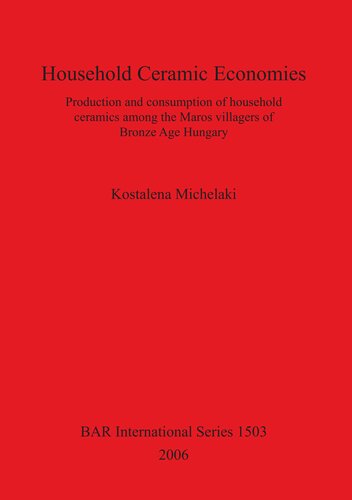

Most ebook files are in PDF format, so you can easily read them using various software such as Foxit Reader or directly on the Google Chrome browser.
Some ebook files are released by publishers in other formats such as .awz, .mobi, .epub, .fb2, etc. You may need to install specific software to read these formats on mobile/PC, such as Calibre.
Please read the tutorial at this link: https://ebookbell.com/faq
We offer FREE conversion to the popular formats you request; however, this may take some time. Therefore, right after payment, please email us, and we will try to provide the service as quickly as possible.
For some exceptional file formats or broken links (if any), please refrain from opening any disputes. Instead, email us first, and we will try to assist within a maximum of 6 hours.
EbookBell Team

5.0
18 reviewsThis work examines the interrelationship between technology and society, using as its cultural-historical focus the Early and Middle Bronze Age periods among the Maros group villages of south-eastern Hungary. To claim that technology is social is not new, but to document how it is social has been difficult and this research aims to provide such documentation, using a ceramic archaeological example. As a result, the author's emphasis is on technological activities and the human actors that performed them. Practice theory, with its focus on conscious social actors, provides the major theoretical direction. Methodologically, to examine a wide range of ceramic technological activities, the author embraces the concept of the 'operational sequence', following ceramics from the procurement and preparation of raw materials, through their forming, finishing and firing, to their use. Through the potter's eye, the author tries to understand the choices made at each step of the production sequence and consider the ways in which they could have organized their labour. To obtain such diverse information, diverse sets of methods, borrowed from archaeology, geology and materials science are employed.